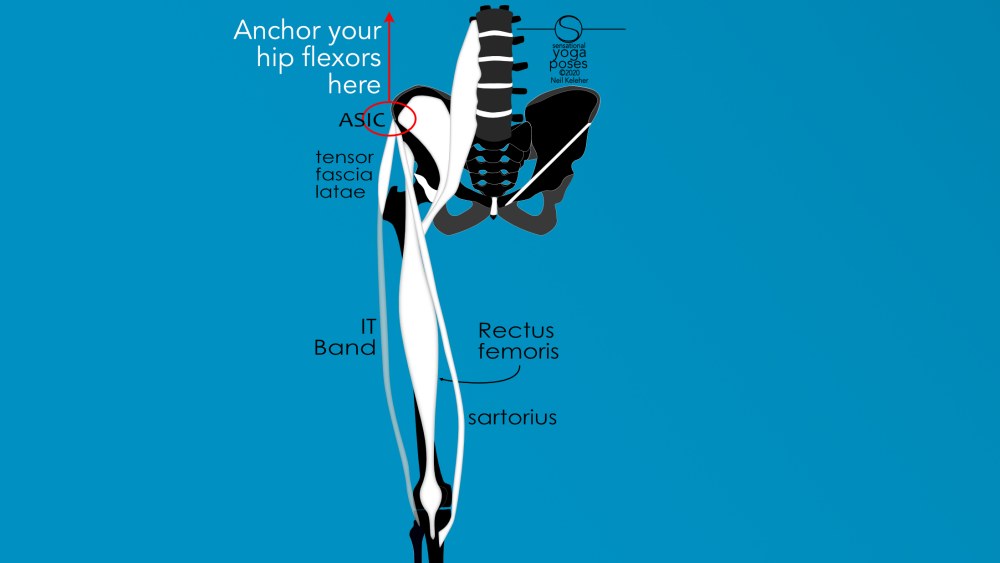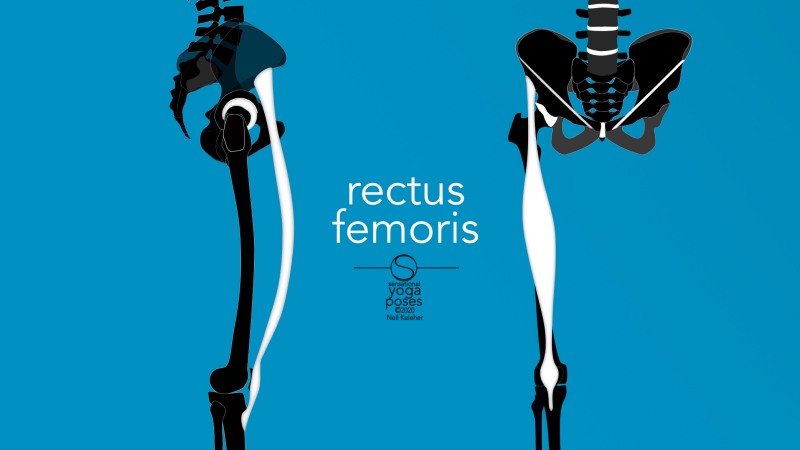In order to stretch the quads effectively it can help to understand that the knee joint is designed for rotation, particularly when it is bent. If you have trouble stretching your quads, or your quads are tight, it may be due to a lack of knee rotation control. Your quads may be tight because they are chronically engaged in order to stabilize the knee against rotation.
The amount of actual rotation the knee is designed for is quite small. But it is controllable. And it is, with practice, perceivable via the muscles that actually drive knee rotation.
For more on knee rotation, including why it rotates, read controllling knee rotation.
In general, with the knees slightly bent, your shins can rotate relative to your thighs. This is "knee rotation". It's actually what allows us to squat with our feet at varying distances apart and it's also what allows us to do poses like virasana, where the idea is to kneel with the butt on the floor (or sinking towards the floor) between the feet.
Another bit of anatomy that can be helpful is understanding that some of the muscles that work to extend or flex the toes cross the ankle and attach to the lower leg bones. These muscles can also be used to help stabilize the ankles and even to help stiffen them against shin rotation relative to the feet.
When stretching the quads, actions you can consider so that your quad stretches are potentially more effective include:
- making your toes active,
- making your feet and ankles active (even combine the two),
- making your knees active.
In the case of the toes and/or ankles you can activate them with the intent of stiffening the foot, ankle and lower leg bones. In the case of the knees, you can stiffen them in such a way that rotation is restricted, or at least controlled. (or simply make them feel strong).
Another means of ensuring effective, and sensational, quad stretching, builds on the the fact that the rectus femoris attaches to the front of the hip bone (near the ASIC).
As such, one further action you can do when working on stretching the quads is anchoring the front of the hip bone. This can mean creating an upwards pull on the pubic bone (since it is relatively easy to feel). Additionally, you can try creating an upwards pull on the ASIC.
Whether stiffening the toes, the ankles or the knees, or whether creating an upwards pull on the ASIC or pubic bone, when using muscles against each other or against some other force, these are all actions that can be felt, thus the idea of sensational quad stretches.
One other suggestion for sensational quad stretching is to actually activate your quads while stretching them. You can try it out in this selection of sensational quad stretches.
Published: 2021 01 31
Updated: 2022 05 09




